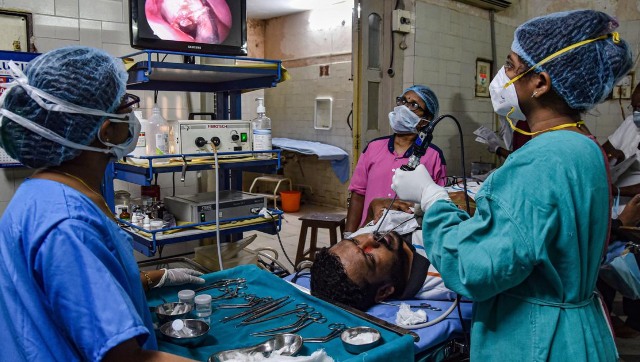The Union Health Ministry on Thursday urged states and union territories to make black fungus or mucormycosis a notifiable disease under the Epidemic Diseases Act, 1897, stating that the infection is leading to prolonged morbidity and mortality amongst COVID-19 patients. All government and private health facilities have been asked to follow guidelines for screening, diagnosis and management of mucormycosis issued by the ministry and the Indian Council for Medical Research. This move comes recently after the Indian Council of Medical Research (ICMR) released guidelines for screening , diagnosing and managing this infection. Mucormycosis, according to the ICMR, is a fungal infection that mainly affects people who are on medication for other health problems that hamper their ability to fight environmental pathogens.
The ministry, in a letter, said that in recent times a new challenge in the form of a fungal infection namely mucormycosis has emerged and is reported from many states amongst COVID-19 patients, especially those on steroid therapy and deranged sugar control. “This fungal infection is leading to prolonged morbidity and mortality amongst COVID 19 patients,” Joint Secretary in the health ministry Lav Agarwal said in the letter. The treatment of this fungal infection requires a multidisciplinary approach consisting of eye surgeons, ENT specialists, general surgeons, neurosurgeons, and dental maxillofacial surgeons, among others, and institution of Amphotericin-B injection as an antifungal medicine. “You are requested to make mucormycosis a notifiable disease under the Epidemic Diseases Act, 1897, wherein all government and private health facilities, medical colleges will follow guidelines for screening, diagnosis, management of mucormycosis, issued by the Ministry of Health and Family Welfare (Gol) and the Indian Council of Medical Research (ICMR). “And, make it mandatory for all these facilities to report all suspected and confirmed cases to health department through district-level chief medical officer and subsequently to Integrated Disease Surveillance Programme (IDSP) surveillance system,” the letter stated. To eliminate this infection, it is important to quickly diagnose the patient as it can be aggressive and life-threatening. Here’s a list of symptoms, prevention methods as given by the ICMR.
What are the symptoms?
- Pain and redness around eyes and/or nose
- Fever
- Headache
- Coughing
- Shortness of breath
- Blood in vomit
- Altered mental status
Who is most at risk?
- Uncontrolled diabetes
- Immunosuppression by steroids
- Prolonged ICU stay
- Comorbidities post-transplant/malignancy
- Kidney disease
- Cancer
- Heart disease
How to prevent the infection
- Use a mask if visiting a dusty construction site
- Wear shoes, long trousers, long sleeve shirts and gloves while handling soil.
- Maintain personal hygiene
ICMR’s things to-do
- Control hyperglycemia
- Monitor blood glucose level post- COVID-19 discharge
- Use steroids judiciously - correct timing, dose and duration
- Use clean, sterile water for humidifiers during oxygen therapy
- Use antibiotics/antifungals judiciously
ICMR’s things not-to-do
- Do not miss warning signs and symptoms
- Do not consider all cases with blocked nose to be bacterial sinusitis, especially in the context of immunosuppressors and/or COVID-19 patients on immunomodulators
- Do not hesitate to seek aggressive interventions
- Tests like KOH staining, microscopy, culture, MALDI-TOF can be done to detect fungal aetiology
- Don’t lose crucial time by hesitating to initiate treatment
With inputs from PTI
)